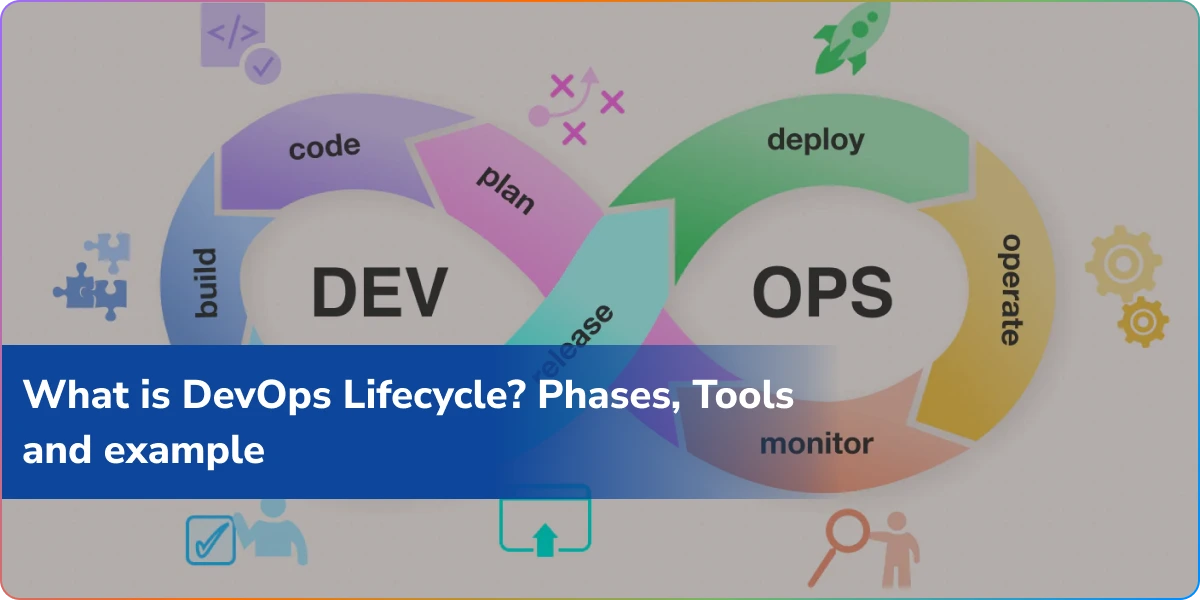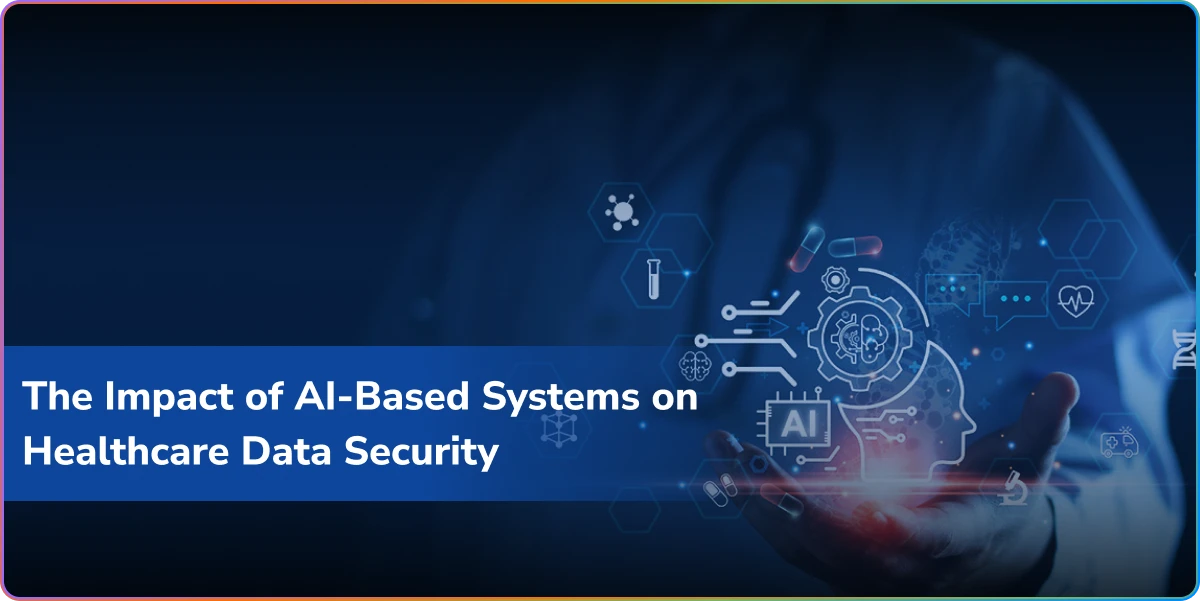Now, the world of software development is moving at a very fast, collaborative, and iterative pace. It is here that DevOps steps in as a practice to bridge development and operations, proposed to achieve a smooth workflow, increased efficiency, and better delivery of products.
Basically, to understand how DevOps works, one needs to know the DevOps lifecycle, its phases, and the tools that make all these things possible. The goal of this guide is to explain about the DevOps cycle: how it works, the devops top tools that come into play, and several real-life examples.
Understanding What is DevOps Lifecycle?
The DevOps lifecycle represents the whole software development process, from planning through deployment to monitoring, putting an emphasis on close collaboration between developers and IT operations.
Most of the development models conventionally work in isolation, while DevOps ensures continuous feedback. It allows for faster delivery, higher-quality products, and greater customer satisfaction.
Key phases of the DevOps life cycle typically include:
- Plan
- Code
- Build
- Test
- Release
- Deploy
- Operate
- Monitor
Every stage is important in its own right when it comes to the realization of continuous integration and, subsequently, continuous delivery.
Phases of DevOps Life Cycle
Now, let us know in detail each of the phases of the DevOps lifecycle and what happens at each stage.
1. Planning Phase
Behind every well-run software project, there’s a plan. Planning includes defining certain goals of the project, stating when certain things must happen, and defining deliverables.
Project managers organize working tasks and distribute functions among the team using tools such as Jira, Trello, or Asana. It is at this stage that they should clearly define what the project entails, its scope, and objectives among the parties concerned.
Key Objective: Clearly define the requirements and set milestones for both development and operations teams.
2. Coding Phase
After the plan is ready, the developers proceed with writing code. The changes in the code are tracked using version control systems like Git, Bitbucket, or GitLab.
Here, collaboration is easy because several developers can work on one project at the same time, and it will not result in conflicts.
Key Objective: Ensure clean, maintainable code that fits project goals and standards.
3. Building Phase
This is the stage that prepares the source code to be compiled into executables or deployable artifacts. The advent of build utilities such as Maven and Gradle, and of continuous integration tools such as Jenkins, has added speed and reliability to this process.
Besides, automation minimizes errors and helps developers smoothly merge the new code into the existing system.
Key Objective: Automate the construction enough to get it into either a test or deployable state.
4. Testing Phase
It usually undergoes extensive testing for finding bugs and performance issues before actual deployment. Different automated testing tools like Selenium, JUnit, or TestNG are used to ensure code stability and quality.
Testing is considered at the heart of the DevOps cycle. By continuous testing in DevOps, problems can be detected as early as possible and thus reduce the cost and effort needed for fixing later in the process.
Key Objective: Application shouldn’t have bugs, defects, and must maintain the quality of standards.
5. Release Phase
By now, the code has been tested and is prepared for release; hence, activities will involve packaging and preparation of the application for deployment.
Versioning is controlled by tools such as Jenkins, Ansible, and Docker that focus on releases, which can be smooth and predictable with little human intervention.
Key Objective: Deployment readiness shall be performed in a controlled and reliable way.
6. Deployment Phase
This is when the software is taken into production. Now, in modern DevOps, the deployment must be automated to ensure fast, smooth rollouts with minimum downtime.
Of course, containerization with tools such as Docker and orchestration in platforms like Kubernetes are what come in very handy.
Key objective: Automate the deployment for quicker delivery with minimal errors.
7. Operate Phase
Once deployed, the operational phase comes in, which means observing the system for its stability and performance. Operations teams deal with server maintenance, network configuration, and uptime management.
System health and other performance metrics can be tracked through Nagios, Splunk, or New Relic.
Key Objective: The deployment of software must be smooth and ensure maximum uptime.
8. Monitoring Phase
Monitoring is a continuous process that informs the process of improvement to be done for future releases. This would involve analyzing performance metrics, user behavior, and system logs to find out at what point bottlenecks or failures occur.
The most widely used tools during this phase include Prometheus, Grafana, and ELK Stack: Elasticsearch, Logstash, Kibana.
Key Objective: To always get information so as to improve experiences.
DevOps Lifecycle Diagram
Let’s consider the DevOps lifecycle diagram to be an infinite loop for better understanding.
Each stage, from planning to monitoring, leads to another in order to seamlessly cover the continuous improvement and delivery cycle. In fact, this very loop shows that DevOps is one continuous process, not some one time thing. It is an endless effort of collaboration, automation, and optimization.
A typical DevOps process diagram looks something like this in a continuous loop:
Plan → Code → Build → Test → Release → Deploy → Operate → Monitor → Repeat
It’s an infinite loop because it guarantees continuous deliverables, feedback, and innovations.
Popular DevOps Tools
Success in DevOps will depend to a great extent on proper usage of tools which can automate and manage different phases of the DevOps cycle.
Following are some of the most popular DevOps tools that have a presence across different industries:
| DevOps Phase | DevOps Engineer Tools | Purpose |
| Planning | Jira, Trello, Asana | Project management and planning |
| Coding | Git, Bitbucket, GitLab | Source code management |
| Building | Jenkins, Maven, Gradle | Continuous integration and build automation |
| Testing | Selenium, JUnit, TestNG | Automated testing and QA |
| Release | Jenkins, Ansible, Puppet | Release and configuration management |
| Deployment | Docker, Kubernetes, Terraform | Containerization and orchestration |
| Operation | Nagios, New Relic, Datadog | System monitoring and performance tracking |
| Monitoring | Prometheus, Grafana, ELK Stack | Data analysis and visualization |
According to the DevOps methodology, the DevOps top tools make collaboration easier and reduce human errors, hence allowing for continuous delivery.
Benefits of Using the DevOps Life Cycle
Organizations applying the life cycle of DevOps will be able to realize a number of advantages, including the following:
Faster Delivery: Continuous integration and deployment make the product delivery process faster.
Improved Collaboration: DevOps provides for communication between the development and operation teams.
Higher Quality: Testing throughout leads to higher stability and performance.
Scalability: It’s easy to scale applications using automation tools as the demand increases.
Fewer Failures: Monitoring in real time helps find and fix problems before they get out of hand.
In all, a strong DevOps lifecycle bolsters business agility and ensures better user satisfaction.
Real-World Example
Now, let’s take a closer look at how an example of a software company effectively uses the DevOps cycle:
Netflix. Netflix uses the principles of DevOps to handle its large-scale streaming infrastructure.
How?
- Plan: Agile tools enable product teams to define new features and goals.
- Code & Build: The development team uses automated build and integration through Git and Jenkins.
- Testing: The features are tested automatically to ensure stability before deployment.
- Deploy: Seamless deployment of Docker containers and Kubernetes orchestration.
- Operate & Monitor: This includes performance monitoring in real time through monitoring tools such as Prometheus and Grafana.
By iterating on the DevOps cycle, Netflix is able to continuously stream faster and increase reliability.
Best Practices For DevOps Lifecycle
Following are some of the best practices for getting the most out of your DevOps life cycle:
- Automate Everything: Automation from builds down to testing and deployment saves time and reduces errors.
- CI/CD Pipelines: Employ Continuous Integration and Continuous Deployment for swifter delivery.
- Emphasis on Collaboration: Encourage open lines of communication.
- Monitor Continuously: Real-time feedback lets one find problems early.
- Adopt the Right Tools: Utilize the right combination of DevOps engineer tools that suit the needs of your project.
- Feedback Loops Implementation: Continuous collection and review of user feedback and operational data.
These practices ensure smoother workflows and consistent delivery along the DevOps life cycle.
Conclusion
This DevOps life cycle helps developers, testers, and project managers accomplish the process efficiently with fewer errors and more desirable outcomes. Every part of this ecosystem-from DevOps process diagrams to popular DevOps tools-is very important in the efforts towards making software delivery efficient and reliable.
At Logixbuilt Solutions, we enable enterprise adoption of modern DevOps practices, thereby changing their paradigm in developing and deploying software. Our experts specialize in Automation, Continuous Integration and Continuous Deployment Pipelines, and Cloud-Native Solutions to make sure your systems are fast, secure, and scalable.
FAQ’s
1.What is the DevOps lifecycle?
DevOps is the continuous lifecycle that integrates software development with IT operations. It covers, within continuous cycles, planning, coding, building, testing, release, deployment, operation, and monitoring-all aimed solely at improving the speed, collaboration, and quality of the product.
2. What are the major phases of the life cycle of devops?
Key phases in the DevOps lifecycle: Plan, Code, Build, Test, Release, Deploy, Operate, and Monitor. These stages fit into a continuous life cycle that enables teams to deliver faster and smoother.
3. Which tools are used in the DevOps cycle?
The popular DevOps tools are Git, Jenkins, Docker, Kubernetes, Ansible, Selenium, Prometheus, and Grafana. These tools assist the DevOps engineer in automating builds, testing, deployment, and monitoring activities.
4. What is the DevOps lifecycle diagram?
The DevOps lifecycle diagram depicts graphically the continuous loop of activities in the development and operations-from planning to monitoring. The focus is on continuous integration, delivery, and feedback for better performance and agility.
5. Can you give a DevOps example used in the real world?
Yes, Netflix does. This follows a DevOps process diagram wherein continuous integrations, testing, and deployment are done with the help of automation tools like Jenkins, Docker, and Kubernetes to enable them to provide updates without any downtime.


